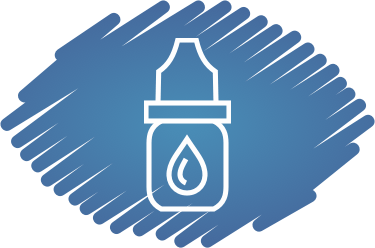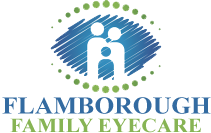Ever dreamed of ditching those glasses or contacts? While a magical cure for myopia isn’t here yet, don’t lose hope. Myopia, or nearsightedness, can’t be reversed. But the good news is, there are many effective treatments available to slow down its progression.
So, while you can’t rewind the clock on your vision, you can certainly pause it. With the right approach, you can enjoy clearer vision for years to come.
What Is Myopia?
Myopia, also called nearsightedness, is an eye condition that makes it difficult to see objects that are far away. Myopia is a refractive error, which means it is caused by light being reflected improperly onto the back of the eye. This can happen if the cornea, the surface of your eye, is misshapen, or if the eyeball is too long.
Myopia is a common eye condition that impacts as many as 30% of Canadians. It usually appears in childhood and worsens until early adulthood, when the eyes stop growing. Luckily, many myopia treatments can slow down myopia progression, so diagnosing myopia early is important.
Symptoms of Myopia
The most common symptom of myopia is blurry vision when looking at things that are far away. However, there are some other signs that you or your child may be struggling with myopia.
- Headaches
- Eye strain
- Squinting or using one eye to look at distant objects.
- Fatigue when doing activities that require looking into the distance like driving.
- Shortened attention span
- Poor academic performance
- Holding objects like books close to the face.
The Importance of Childhood Eye Exams

On average, most children who develop myopia will begin to experience symptoms between ages 6 to 13. This is a time when your child is learning a lot in school, and myopia may set back their academic progress.
On top of that, myopia is a progressive disease, meaning it gets worse with time. The earlier an optometrist can diagnose myopia, the earlier treatment can begin. Treating myopia early can slow its progression and lead to better vision in adulthood.
The Canadian Association of Optometrists recommends that children aged 5-18 should have their vision examined once a year. During a comprehensive eye exam optometrists will check a child’s eyes for myopia and other eye conditions like hyperopia and astigmatism.
How Is Myopia Treated?
While Myopia can’t be reversed, that doesn’t mean there aren’t treatments that will allow you to see clearly. Myopia treatments can range from wearing glasses to laser eye surgery or using multiple treatments. By consulting your optometrist, they can help you find a myopia solution that works for you.
Child Treatments
While myopia treatments for children and adults are similar, some treatments work better for children than adults. These treatments include:
- Sun exposure has been linked to a reduced risk of myopia.
- Specialty glasses like MiyoSmart lenses can help slow the progression of myopia.
- Ortho-K lenses are overnight contacts that can temporarily reshape the cornea to help alleviate myopia symptoms.
- Atropine eye drops can be used to slow down myopia progression.
- Traditional glasses and contact lenses can also be used to treat childhood myopia.
Adult Treatments
In adulthood, myopia usually stops progressing. This means that the treatments for myopia begin to focus on correcting vision, rather than slowing the progression of myopia. Common adulthood treatments for myopia include:
- Traditional contact lenses and glasses
- Ortho-k overnight contact lenses
- Laser eye surgery can reshape the cornea to alleviate myopia symptoms.
Can Myopia Cause Other Eye Diseases?
While Myopia doesn’t cause other eye diseases, it may put you at risk of developing other eye diseases down the road. People with high myopia (myopia caused by a long eyeball) and pathologic myopia (myopia that progresses into adulthood) are at a higher risk of developing several eye conditions. The most common eye conditions associated with myopia are:
- Glaucoma: Fluid buildup in the eye puts pressure on the optic nerve. This can lead to vision loss.
- Cataracts: The lens of the eye becomes cloudy, impairing vision.
- Neurovascularization: New blood vessels begin to develop in the eye. If these blood vessels leak it can lead to distorted vision or vision loss.
- Retinal detachment: The retina detaches from the back of the eye, leading to vision loss.
Tips for Maintaining Eye Health
Aside from the specific methods mentioned above, there are general practices that families can adopt to promote healthy eyes. These include:
- Spending time outdoors has been linked to a lower risk of myopia in children. It also promotes physical activity and helps reduce screen time.
- Balancing screen time with breaks. When using screens, take regular breaks every 20 minutes to allow the eyes to rest.
- Ensure that your workspace or study area is well-lit to reduce eye strain.
- Eating a balanced diet with nutrients like vitamin A, C, and E can help maintain your eye health.
- Regular eye exams are crucial to detect eye conditions like myopia early on.
Find Your Myopia Solution
While you may not be able to cure your myopia, that doesn’t mean you need to struggle with blurry vision. With the variety of myopia treatments available, there’s one that’s right for you and your lifestyle. The first step to finding your myopia solution is consulting an eye care professional.
At Flamborough Family Eyecare, we offer comprehensive myopia treatment. Book an appointment with us today to learn more about your options.


















